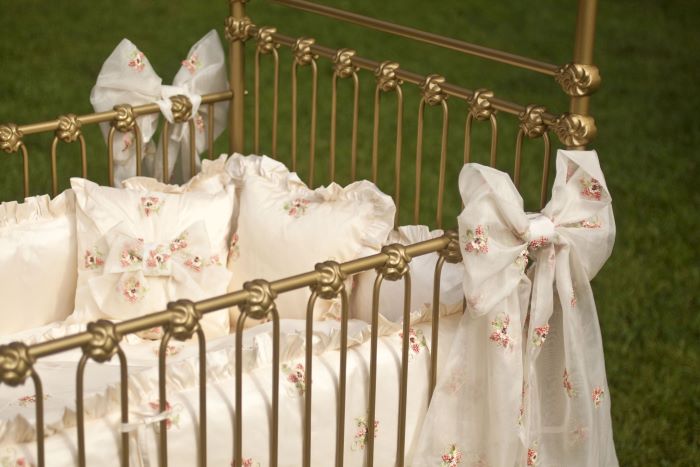Choosing a crib for your baby is one of the most important decisions new parents make. Cribs come in various materials, with iron cribs being a popular choice for many families. However, concerns about safety, comfort, and durability often arise. In this article, we will explore the safety of iron cribs, their benefits, potential risks, and considerations for parents.
What Are Iron Cribs?
Iron cribs are cribs made from metal, usually iron or steel. They have a sturdy construction that can withstand the wear and tear of daily use. These cribs often feature a classic design, appealing to many parents who want a timeless look for their nursery.
Iron cribs are available in various styles and colors. Some parents choose them for their aesthetic appeal, while others appreciate their durability.
Safety Standards for Cribs
Before discussing the safety of iron cribs, it’s important to understand the safety standards in place for all cribs. In the United States, the Consumer Product Safety Commission (CPSC) sets regulations to ensure cribs meet specific safety guidelines.
These standards include requirements for:
Slat spacing: The distance between crib slats must be no more than 2 3/8 inches to prevent the baby’s head from getting stuck.
Stable construction: Cribs must be sturdy and not wobble when shaken.
No sharp edges: Cribs should be free of sharp edges and points that could harm the baby.
Finish and materials: The paint and materials used must be non-toxic and safe for babies.
When choosing an iron crib, ensure it meets these safety standards. Look for certification labels that indicate compliance with CPSC regulations.
Benefits of Iron Cribs
Iron cribs come with several benefits that can make them an appealing option for parents.
Durability
One of the most significant advantages of iron cribs is their durability. Unlike wooden cribs, which may warp or crack over time, iron cribs can last for many years. This longevity makes them a cost-effective choice for families.
Parents can often pass down iron cribs to younger siblings or even to future generations.
Aesthetic Appeal
Iron cribs often feature intricate designs and finishes. Many parents appreciate their classic and elegant look. They can complement various nursery themes, from vintage to modern.
This aesthetic appeal can enhance the overall decor of the nursery, creating a welcoming environment for the baby.
Easy to Clean
Iron cribs are generally easier to clean than wooden cribs. A simple wipe-down with a damp cloth can keep them looking fresh and new. This ease of maintenance is particularly beneficial for parents dealing with spills or messes.
Potential Risks of Iron Cribs
While there are benefits to iron cribs, there are also potential risks that parents should consider.
Weight
Iron cribs tend to be heavier than wooden cribs. While this weight contributes to their durability, it can also make them difficult to move. If you plan to rearrange your baby’s room frequently, this could be a consideration.
Temperature Regulation
Metal cribs can become hot or cold depending on the temperature of the room. In warmer climates, the metal may retain heat, making the crib uncomfortable for the baby. Conversely, in colder rooms, the crib may feel chilly to the touch.
It’s essential to monitor your baby’s comfort and adjust their bedding accordingly.
Risk of Injury
There is a potential risk of injury with iron cribs, particularly if the crib is not designed correctly. Parents should ensure that:
There are no sharp edges or protruding parts that could hurt the baby.
The crib is stable and does not wobble.
The mattress fits snugly in the crib, preventing any gaps where the baby could get stuck.
Tips for Ensuring Safety
If you choose an iron crib for your baby, consider the following tips to ensure safety:
Regular Inspections
Regularly check the crib for any signs of wear and tear. Look for loose screws, broken parts, or rust. Addressing these issues promptly can help maintain a safe sleeping environment for your baby.
Proper Bedding
Use a firm mattress that fits snugly in the crib. Ensure that there are no gaps between the mattress and the crib’s sides. Additionally, use fitted sheets designed for cribs to reduce the risk of suffocation or entrapment.
Avoid Excessive Bedding
Avoid placing excessive bedding, pillows, or toys in the crib with your baby. These items can pose suffocation hazards. Instead, use a light blanket if necessary and ensure your baby sleeps on their back, as recommended by pediatricians.
See also: Are Door Frame Bouncers Safe
Conclusion
Iron cribs can be a safe and stylish option for your baby’s nursery when chosen and maintained correctly. They offer durability, easy cleaning, and aesthetic appeal. However, parents must remain aware of the potential risks associated with metal cribs, including temperature regulation and the risk of injury.
Always ensure that any crib you choose complies with safety standards and undergo regular inspections. By taking these precautions, you can provide a safe and comfortable sleeping environment for your baby, allowing you to enjoy peace of mind as they rest.
In the end, the decision to use an iron crib depends on your family’s needs, preferences, and commitment to safety. With careful consideration and attention to detail, an iron crib can be a wonderful addition to your home.
Related topics:


